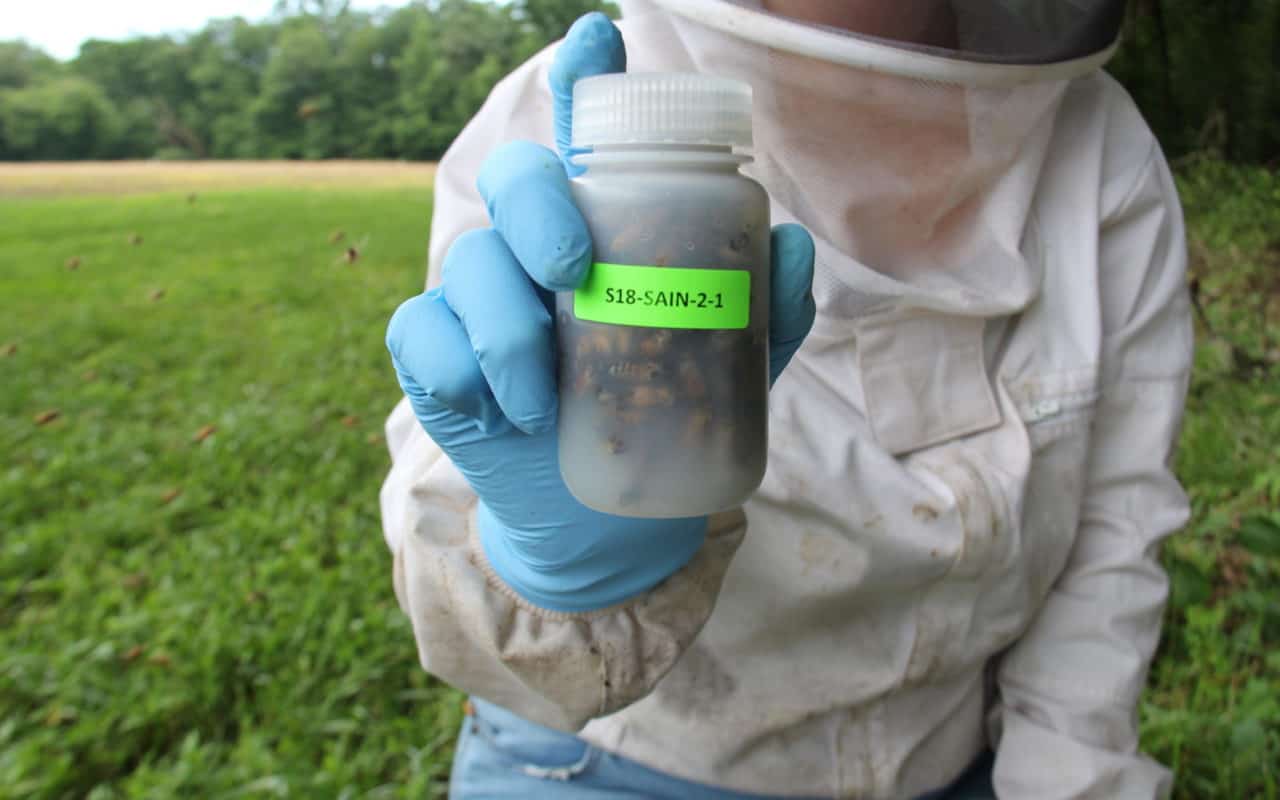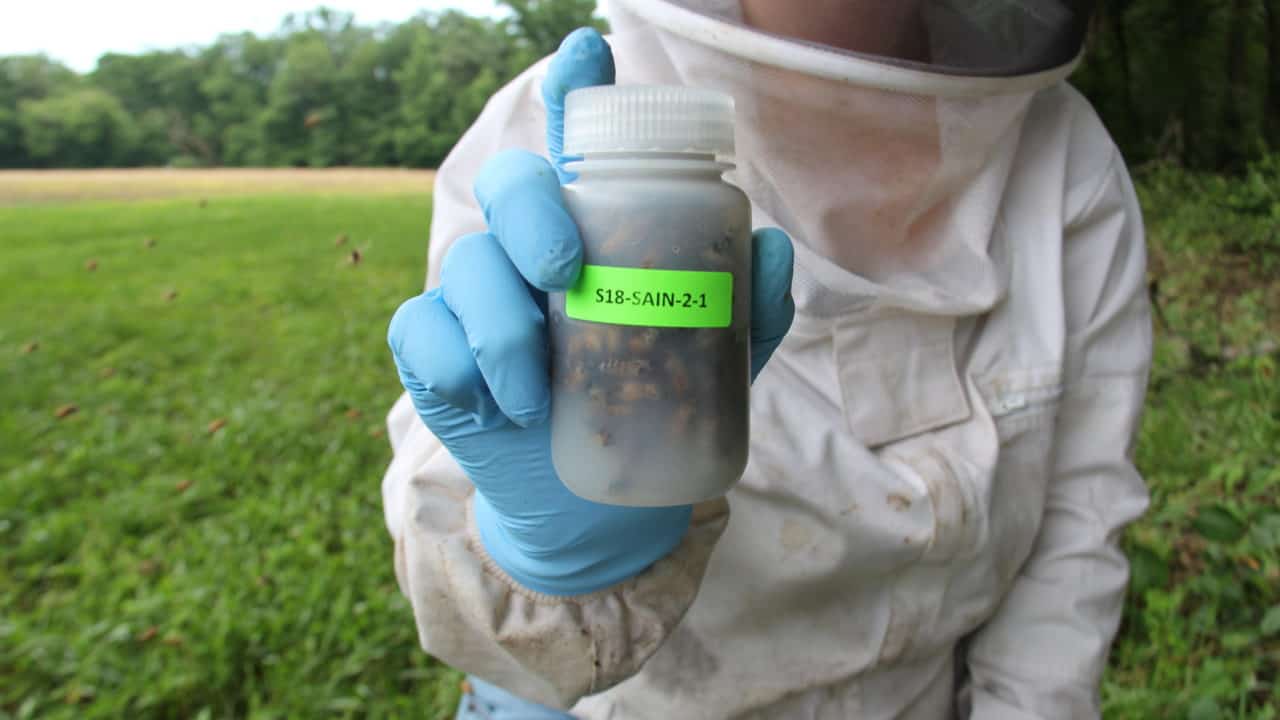Last year, 2019, marked our fifth (fifth?!) year of the Sentinel Apiary Program. It was another record breaking year: 2,221 samples were taken from 461 colonies in 85 apiaries! The program continues to grow each year, and we are so excited about the progress we have made, and for what we will continue to do in the future. Take a look at the map below. Don’t see an apiary in your state? Join us and be the first! One exciting thing to look out for in 2020 is another partnership with the American Beekeeping Federation (ABF). ABF is sponsoring ABF members with $100 off a…
Author: Kelly Kulhanek
Sentinel Apiary Monthly Memo: November Issue
That’s a wrap on the 2019 Sentinel Apiary Program! This year was a real record breaker with 106 Sentinel Apiaries in 29 states. Sentinel beekeepers put in blood, sweat, and stings to send in over 2,500 samples from 564 colonies. The data collected from these samples helps participants make data driven management decisions. Mite loads are also shared on our public interactive Varroa map, so that Sentinel Apiaries can act as regional benchmarks for colony health. If you would like to help support the Sentinel Apiary program and keep this valuable data accessible, please consider donating to our annual fundraising effort! On average, this year’s…
Sentinel Apiary Program Monthly Memo: October Issue
Welcome back to yet another Sentinel Apiaries update. We’re coming to you in the spookiest month of the year with some pretty scary stuff: mites, mites and more mites! I spent an embarrassing amount of time in photoshop to drive this point home (see right). As we always do in September, we saw a pretty significant jump in mite loads last month. Over 50% of states were above treatment threshold. You can see a lot less yellow (below threshold states) on our Varroa heat map below. Mite loads in Sentinel apiaries were much higher this September than last year (see below). If you have yet…
Sentinel Apiary Program Monthly Memo: September Issue
Hello Beekeepers, we’re back with the September Sentinel Apiary update one day late but hopefully not a dollar short! It’s been a very busy month full of monitoring and treating for mites, plus a trip to Montreal for the Apimondia world beekeeping conference. It was such a blast to see so many Sentinel beekeepers and BIP supporters north of the border and to present the program at the citizen science session. Of course, while the beekeeper is away, the bees (and mites) will play. Here’s what happened with Sentinel Apiaries in August (September update to come shortly). Last month, 61 beekeepers submitted 330 samples…
Sentinel Apiary Monthly Memo: August Issue
We’re back again with another monthly update from the Sentinel Apiary Program! Let’s take a look at what’s been going on with mites, drones, honey, and more over the past month. Throughout the month of July, Sentinel participants submitted 378 samples from 71 apiaries across 27 states! July finally showed us a big increase in mite loads, with the average Sentinel apiary now at the treatment threshold of 3 mites/100 bees. This July Sentinel apiary mite loads are higher than the historic national average, and much higher than the mite loads from last year’s Sentinel apiaries. This could mean we’re having especially high Varroa pressure…
Sentinel Apiary Monthly Memo: July Issue
We’re here to help you beat the heat with your second monthly Sentinel Monthly Memo of the year. It has been hotter than Hades out there, so hopefully you and your bees are keeping cool. We’re another month into the 2019 Sentinel Apiary Program, and here’s what we’re seeing. In the month of June, we received a record 417 samples from 70 Sentinel Apiaries in 28 states. To put that into perspective, that’s over 125,000 bees, enough to comprise 2-3 full colonies. Our undergraduate lab technicians are certainly being put to good use! Congratulations to the state with the lowest June mite load: New Hampshire…
Sentinel Apiary Monthly Memo: June Issue
I don’t know about you, but my back hurts, which must mean the peak beekeeping season is officially well underway. The honey is flowing and supers are filling up. Do you know what your mite loads are? If not, Sentinel Apiaries are here to help. Sentinel Apiary participants sample 4 or 8 colonies for Varroa every month during the peak beekeeping season. This year marks the largest year of the Sentinel Apiary Program to date with 102 registered Sentinel Apiaries! If there’s a Sentinel Apiary near you, check their mite loads at bip2.beeinformed.org/sentinel. This can help show you what mites are doing in your…
2018 Sentinel Apiary Program Results
The fourth year of the Sentinel Apiary Program was another great success! The program included 64 beekeepers sampling 418 colonies, for a total of 1,901 samples! You can view the whole 2018 Summary Report here. We are very excited to share that 2018 Sentinel Participants had significantly lower Varroa loads than the historical national average! Our Hive Scale Map also underwent extensive remodeling this year, and now includes Varroa data as well as showing a net weight gain or loss per state over the past week to provide even more real time context. With…
2016 Sentinel Apiary Program Results
With the help of beekeepers all over the country, we have successfully completed our second year of the Sentinel Apiary Program! In 2016, 28 beekeepers from 16 states worked with us. Together we: Sampled and monitored the health of 289 colonies Processed 1,229 samples for Varroa and Nosema Shared data from 32 hive scales Collaborated with our beekeeping neighbors to improve colony health in our regions After compiling over six months of Varroa, Nosema, and colony inspection data, we are excited to share our results (see the complete 2016 Summary Report Here). Below you can compare our Sentinel Apiary Participant's average monthly Varroa levels to the APHIS National Honey…


